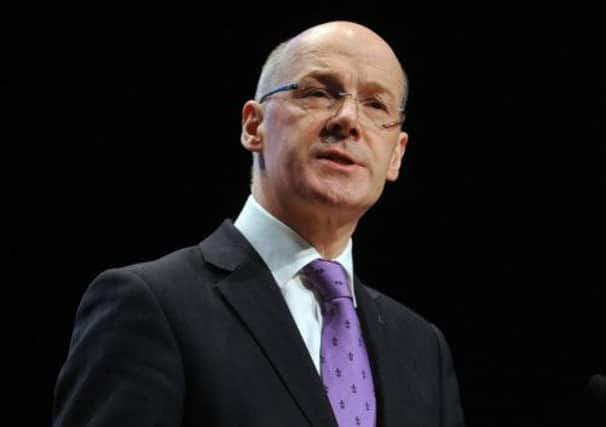Swinney’s business rates raid will hit high street


The surprise increase follows a series of changes that are predicted to negatively impact not just individual businesses, but the regeneration of high streets and the wider economy, too.
Precisely how this latest increase will be funded is not yet clear. However, what is clear is that it will be taken from already hard-pressed businesses, a move that will dampen hopes of an immediate upturn in the commercial property industry.
Advertisement
Hide AdAdvertisement
Hide AdWhat businesses in Scotland need are incentives to stimulate growth; increasing the rates burden will have the opposite effect.
The Scottish Government has already increased annual liabilities for both large and small businesses. We have seen the introduction of a health levy, the so-called “Tesco tax”.
Large food stores with a rateable value in excess of £300,000 selling tobacco and alcohol now pay an extra 13p in the pound.
The majority of modern food stores fall into this bracket and, therefore, the minimum paid per annum, in addition to the basic rate per pound due by all ratepayers, is £39,000, based on a rateable value of £300,000.
Struggling landlords were dealt a further blow earlier at the start of the year with the announcement that vacant retail and office premises would be subject to 90 per cent liability in place of the current 50 per cent.
The Scottish Government says this will force landlords into reducing rents, which it perceives as being held artificially high.
However, the argument is fundamentally flawed. Anybody with a general understanding of property will know it is principally driven by supply and demand. In the midst of the current crisis, beyond the established centres of Glasgow, Edinburgh and Aberdeen, there is ample supply but little or no demand.
Landlords now face paying higher rates, thereby draining funds that could have been used to refurbish or reconfigure properties. There is a real risk this decision could force many smaller landlords that previously enjoyed the backing of institutional lenders, into administration.
Advertisement
Hide AdAdvertisement
Hide AdWhile many other factors also play a role in regeneration, an increase in rates is most unwelcome and unhelpful. On a positive note, the Scottish Government has introduced relief schemes that have been welcomed within the industry, such as the Small Business Bonus Scheme, the Fresh Start and New Start initiatives.
However, many of these schemes only benefit small businesses with low rateable values rarely found within major towns and cities.
As a result, a large number of business ratepayers are unable to apply for potential relief through any of these schemes.
Non-domestic rating is one of only three fiscal powers under the direct control of the Scottish Government.
Our secondary towns and cities require urgent action to make them more attractive but raising the rates burden will only add further misery to these areas.
To allow businesses to plan ahead, the Scottish Government must urgently clarify what measures will be put in place to raise the additional £400 million in additional revenue by 2016 and brace itself for the inevitable outcry.
• Peter Muir is director and head of rating for Colliers International in Scotland.